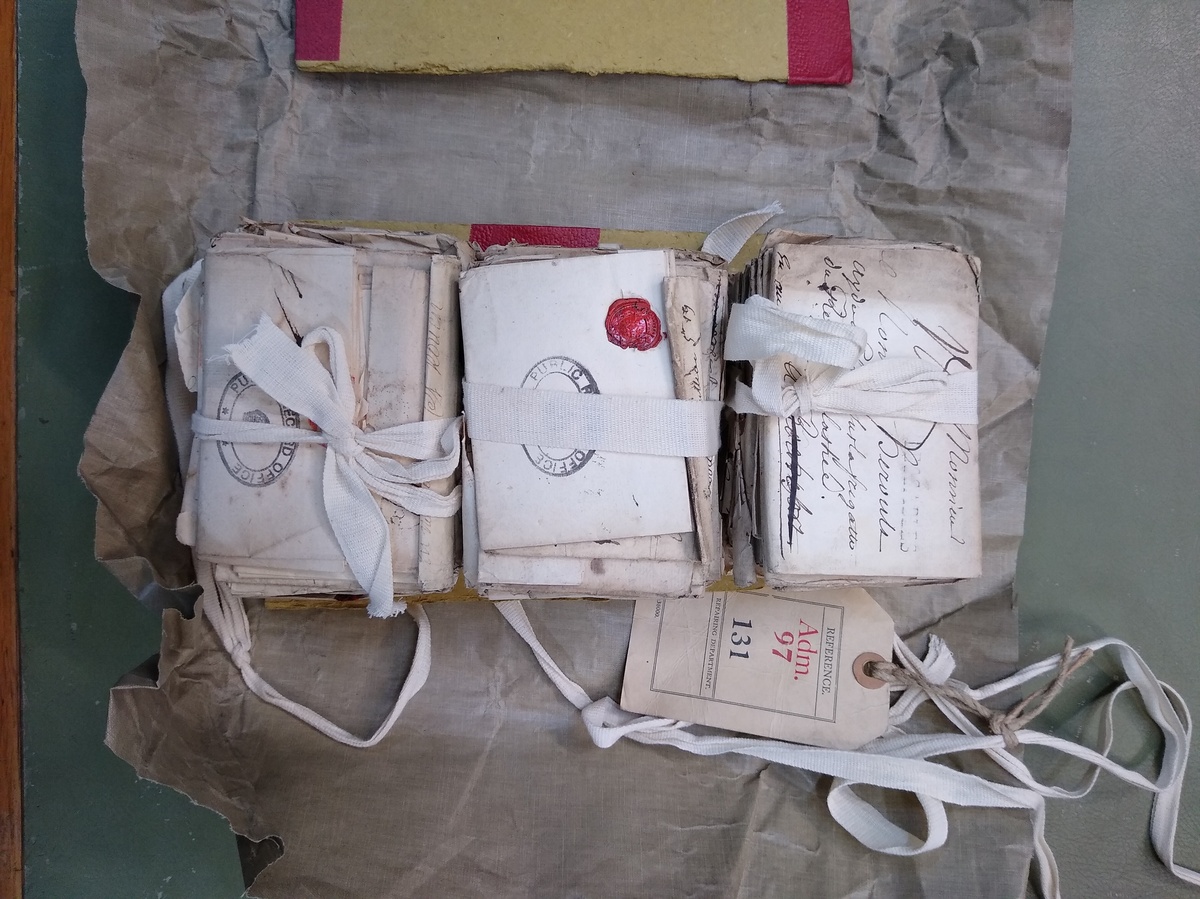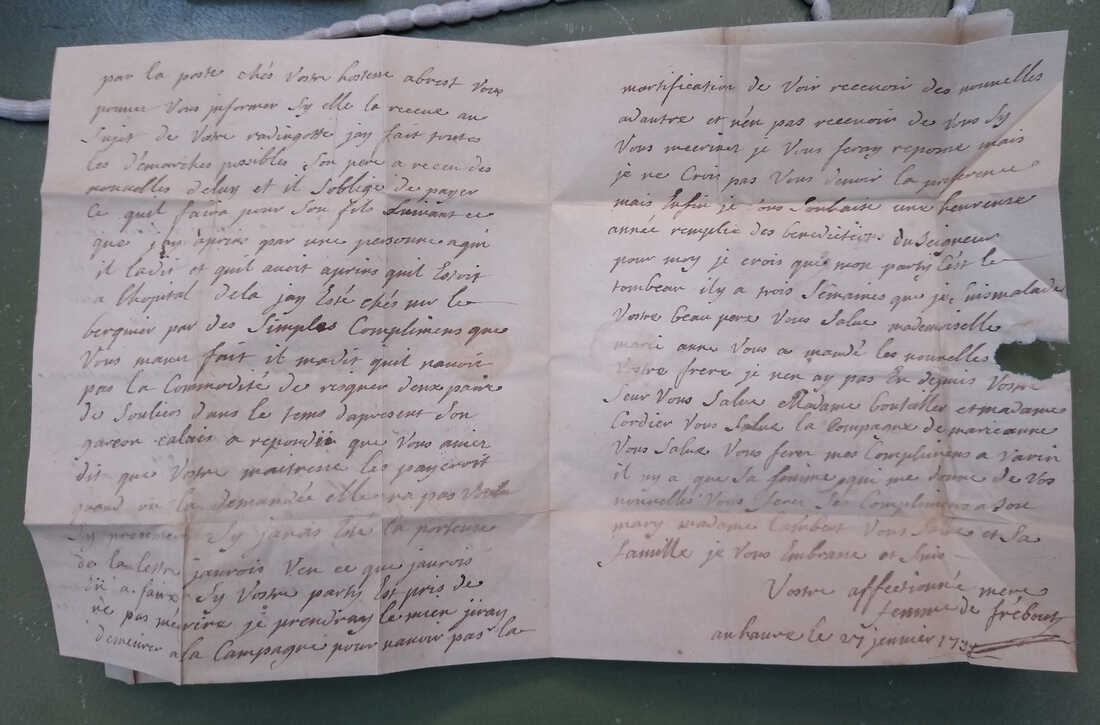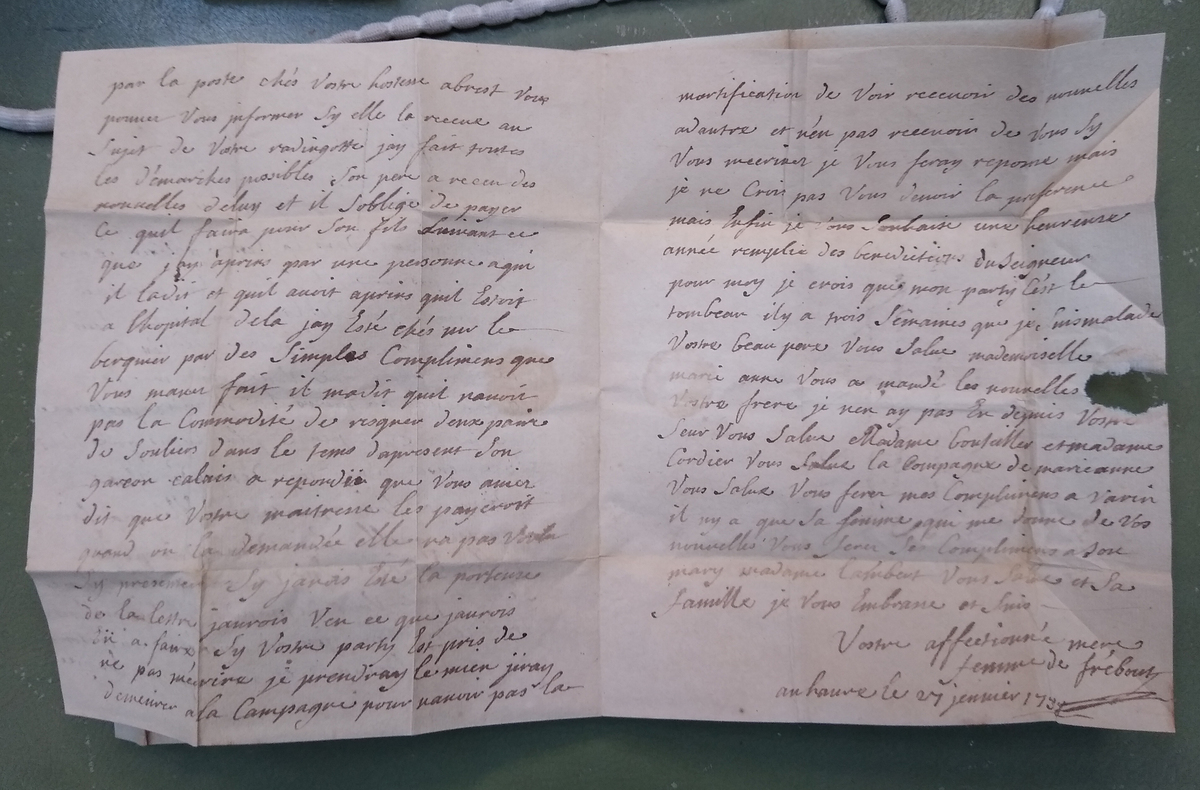[ad_1]

The letters before they were opened.
The National Archives/Renaud Morieux
hide caption
toggle caption
The National Archives/Renaud Morieux

The letters before they were opened.
The National Archives/Renaud Morieux
Scores of French love letters from the mid-18th century have been opened and studied for the first time since they were written.
The letters – sent to French sailors by wives, siblings and parents – never made it to their intended recipients, but they offer rare insight into the lives of families affected by war.
“I could spend the night writing to you,” wrote Marie Dubosc to her husband. “I am your forever faithful wife. Good night, my dear friend. It is midnight. I think it is time for me to rest.”
Dubosc would not have known her husband had been captured by the British, and that he would never receive her message. She died the year after she sent the letter, and likely never saw him again.
Sent between 1757-58 during the Seven Years War, the letters were mostly addressed to the crew of the Galatée warship, and the French postal administration forwarded them from port to port in hopes of reaching the sailors. But when the British Navy captured the Galatée in April 1758, French authorities forwarded the batch of letters to England.
There they remained unopened for centuries, until the historian Renaud Morieux of the University of Cambridge discovered them in the digital inventory of Britain’s National Archives. He checked out the box from the archives with no idea what he would find inside.
The box came with three packs of letters wrapped in white ribbon.
“I had to basically pull the string a bit like a Christmas gift,” he told NPR.
“My heart started to beat faster and I felt like, ‘Ooh, this looks like really cool stuff…There might be some secrets in there.'”

Anne Le Cerf’s love letter to her husband Jean Topsent in which she says “I cannot wait to possess you” and signs “Your obedient wife Nanette.”
he National Archives/Renaud Morieux
hide caption
toggle caption
he National Archives/Renaud Morieux

Anne Le Cerf’s love letter to her husband Jean Topsent in which she says “I cannot wait to possess you” and signs “Your obedient wife Nanette.”
he National Archives/Renaud Morieux
The 104 letters are written on heavy, expensive paper, and some have red wax seals. But they contain the words of common people rather than aristocrats, Morieux says – voices often missing from the historical record, like sailors’ and fishermens’ wives.
“These letters tell us about how people from the lower classes dealt with the challenges of war and the absence of their kin and loved ones,” Morieux says, “and how they managed to overcome distance and the fear of uncertainty.”
Morieux spent months decoding the letters, and published his findings Monday in the French history journal Annales. Histoire, Sciences Sociales.
In one letter, Marguerite Lemoyne, a 61-year-old mother, scolds her son Nicolas Quesnel for not writing:
“On the first day of the year [i.e. January 1st] you have written to your fiancée… I think more about you than you about me…In any case I wish you a happy new year filled with blessings of the Lord. I think I am for the tomb, I have been ill for three weeks. Give my compliments to Varin [a shipmate], it is only his wife who gives me your news.”

Marguerite’s letter to her son Nicolas Quesnel (dated Jan. 27, 1758), in which she says, “I am for the tomb.”
The National Archives/Renaud Morieux
hide caption
toggle caption
The National Archives/Renaud Morieux

Marguerite’s letter to her son Nicolas Quesnel (dated Jan. 27, 1758), in which she says, “I am for the tomb.”
The National Archives/Renaud Morieux
Morieux told NPR Lemoyne’s complaint reveals “universal” family dynamics.
“The son who’s at sea is only writing to his fiance, and the mother gets really pissed off about that,” Morieux said. “And here you feel that there is some kind of…really long, ancient trope about tensions in the family between the mother and the daughter-in-law.”
Morieux said the letters also demonstrate the difficulty of long-distance communication in the 1750s. Many of the senders, like Lemoyne, were likely illiterate and dictated their messages to a scribe.
Moreover, sending a letter to a ship constantly on the move during wartime was difficult and unreliable, and families often sent multiple copies of letters to different ports.
In an effort to maximize the chances of successfully communicating with a loved one, each letter had multiple messages crammed onto the paper, often from different families and addressed to multiple crewmates.
“And so they’re covered with ink, not just from top to bottom…The sentences are written from left to right, but also they’re written in the margins,” Morieux said.
To Morieux, the letters show how communities stay resilient in times of crisis.
“It’s about the power of the collective. It’s about how these people can only survive by relying on others.”
Christopher Intagliata and Gabriel Sanchez contributed to this report.
[ad_2]
Source link

Comments are closed.